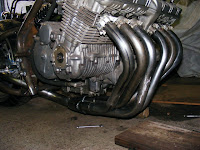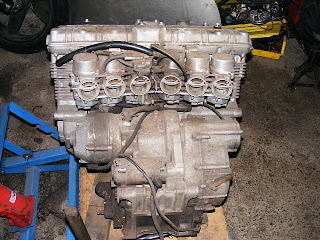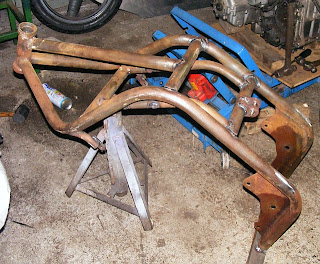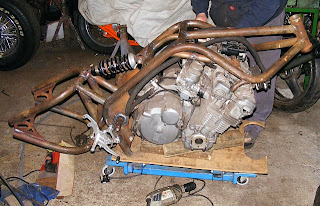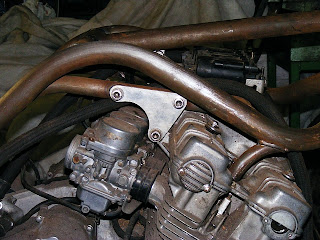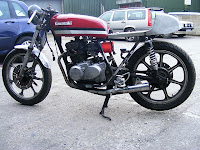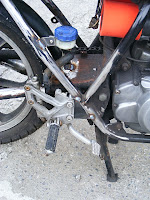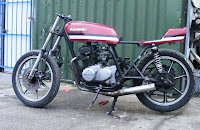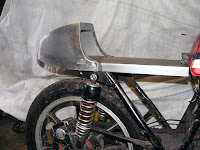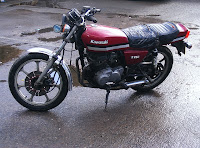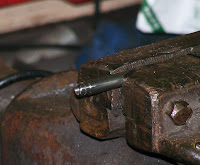| Quit screwing around... |
I've wondered in recent years whats happened to summers. They don't seem to be filled with quite the same sense of being alive that they used to. So, when I spoke to Emily on Wednesday about coming and helping me out, and she had to cry off to go look for some work, I had, an idea. I took the day off, gave her a ride all the places she needed to go, which saved so much time we got to have a couple of hours having a picnic in some woods, by a river. The moral of the story is that sometimes you need to make your own summer memories.
That aside, I had to go and buy some M10 x 1.25mm thread Allen bolts to mount the rear disc on the Kawasaki back onto the rear wheel. You'll notice from the picture it also has enough shank on it that the disc will bear on the shank, and not the thread. The Allen bolt to the left is actually M10 x 1.5mm set screw, and just there for contrast.
| I'm nuts about you |
On the other side of the rear wheel, I needed to fit the new rear sprocket and wasn't over enamoured of the idea of using the original fasteners. substituting M10 x 1.5mm Allen bolts with plenty enough shank to do the job was OK, but I had to file off one face of some nylock nuts to clear the carrier. no big deal as it meant they'd stay in position without the use of a spanner.
| The wheel deal |
That was the major part of the job, although it involved a certain amount of aerosol action on assorted bits and pieces in an attempt to make things look like some one vaguely cared about it all
With everything aerosoled, replaced, polished, and other wise cosmetically improved upon, I re-inflated the tyre, and sanded the paint off of the edges of the wheel slots in the swinging arm prior to putting the rear wheel back into the motorcycle.
| School assembly |
There's still quite a lot to do to it, but once I've finally managed to get the last of the paint off of the front wheel so I can apply a fresh coat and refit it, and Johnny gets the skunk stripe painted onto the body work, we can nail it together and roll it out in the sunshine and see just how well the colour scheme works out.
























